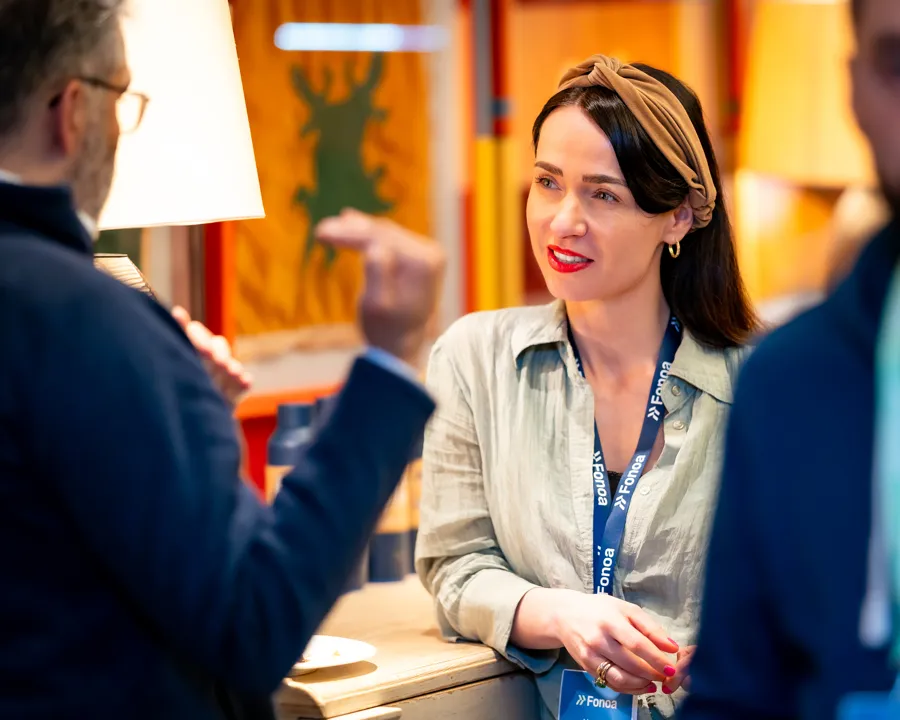Why bypassing the App Store and Play Store is not that simple.
Many are hailing the European Union’s Regulation (EU) 2022/1925 on Contestable and Fair Markets in the Digital Sector (Digital Markets Act, DMA) as a game changer in terms of control and as a way of ending the Big Tech “Tax” on digital platforms. One reason is that the DMA will, effectively, grant digital businesses the option to introduce direct billing solutions instead of relying on conventional routes offered by app stores (Such as the Apple App Store and Google Play Store).
On the one hand, this transition symbolizes newfound opportunities in revenue control and heightened user experiences. On the other (and often ignored) hand, the transition creates additional responsibilities attached to this opportunity - indirect taxes.
Put differently, many businesses are too busy focusing on the “additional 30%” (the commission typically cited as charged by the stores), and forgetting (or ignoring) the new responsibility for calculating, collecting and remitting taxes.
This article focuses on the indirect tax (VAT) challenges companies will likely face when implementing direct billing solutions. But before diving into the tax technical, lets cover some of the basics about the DMA.
What is the Digital Markets Act (DMA)?
Formally, the DMA is legislation from the European Commission (EC) to regulate the operations of large online platforms, often referred to as ‘gatekeeper platforms’, or simply ’gatekeepers’. Its primary objective is to foster a competitive and fair digital single market by laying down specific rules and practices these gatekeepers must adhere to.
The Act, amongst other things, forces intra-platform competition, requiring ‘gatekeepers’ (like Apple and Google) to permit the installation of alternative app stores and apps on their devices.
The Act entered into force on 1 November 2022 and became applicable, for the most part, on 2 May 2023. However, gatekeepers have until 6 March 2024 to comply with all of the Act's provisions.
Who are the “Gatekeepers”?
For simplicity, you can think of them as big tech.
More specifically, gatekeepers are large online platforms that hold considerable market power and provide at least one core platform service. Criteria to be designated a gatekeeper include:
- having a strong economic position, significant impact on the internal market and being active in multiple EU countries
- having a strong intermediation position (connecting a large user base to a large number of businesses)
- having (or about to have) an entrenched and durable position in the market, meaning that it is stable over time if the company met the two earlier criteria in each of the last three financial years
The European Commission published a press release (on September 6, 2023) to designate six tech companies — Alphabet, Amazon, Apple, ByteDance, Meta, and Microsoft — as “gatekeepers” under the DMA.
Additionally, while Samsung Internet Browser met the threshold under the DMA to qualify as a gatekeeper, it provided sufficiently justified arguments showing that its service does not qualify as a gateway for the respective core platform service. It follows that Samsung is currently not designated as gatekeeper with respect to any core platform service.
What are “Core Platform Services”
Core platform services are online intermediation services such as app stores, online search engines, social networking services, messaging services, video sharing platform services, virtual assistants, web browsers, cloud computing services, operating systems, online marketplaces, and advertising services.
The six designated gatekeepers provide 22 core platform services in total such as:
- Operating systems (e.g. Android, iOS, Windows PC)
- Online search engines (e.g. Google Search).
- Web browsers (e.g. Chrome and Safari).
- Online social networking services (e.g. TikTok by ByteDance, Facebook and Instagram by Meta, and LinkedIn by Microsoft).
- Video-sharing platform services (e.g. YouTube).
- Number-independent interpersonal communications services (e.g. Whatsapp and Messenger).
- Online intermediation services (e.g. Amazon Marketplace, Apple App Store).
A full list of gatekeeper platforms and their core platform services is available on the European Commission website.
Why was the DMA introduced?
The goal of the DMA is to contribute to the proper functioning of the European internal market by laying down harmonized rules ensuring for all businesses, contestable and fair markets in the digital sector across the European Union where gatekeepers are present, to the benefit of business users and end users.
The purpose of the Digital Markets Act is to ensure a level playing field for all digital companies, regardless of their size. The regulation will lay down clear rules for big platforms - a list of “dos” and “don’ts” - to stop them from relying on unfair practices or imposing unfair conditions on businesses and consumers. Examples include ranking services and products offered by the gatekeeper itself higher than similar services or products offered by third parties on the gatekeeper's platform or not giving users the possibility of uninstalling any preinstalled software or app.
As a consequence, the DMA is expected to bring several benefits. For instance, the interoperability between messaging platforms is expected to improve - users of small or big platforms will be able to exchange messages, send files or make video calls across messaging apps.
Does the DMA allow developers to keep more revenue? How?
Since the late 2000s, the introduction of mobile apps (mainly as a complement to iOS and Android) has paved the way for a new era of business-consumer interactions. Platforms like Apple's App Store and Google Play emerged as the primary gateways for a growing digital audience to access countless applications.
For social tech juggernauts and gaming developers, this meant reaching a global audience without the tax headache. Because, in Europe and many other countries, the mobile marketplaces through which they sold their digital products would handle the taxes (more on this below).
However, it also meant parting with a chunk of their revenues (sometimes as much as 30%) for in-app purchases. With time, sharing such a significant portion of earnings no longer seemed appealing without the existence of a viable alternative.
The European Union’s DMA, put bluntly, gives companies that viable alternative.
Amongst other things, the DMA prevents gatekeepers blocking business users from offering the same products or services to end users through third-party online intermediation services or through their own direct online sales channel at prices or conditions that are different from those offered through the online intermediation services of the gatekeeper.
This new freedom - to sell directly and essentially avoid the app store commissions - seems like a great way to “gain an extra 30% back on margins”. Commercial teams and product leads exploring selling outside the traditional app stores no doubt see the potential to improve revenues and customer experiences.
Unfortunately, what is often ignored are some of the additional (tax) responsibilities that come with this freedom.
What are the additional tax responsibilities?
The DMA is not tax legislation and reading it would not illuminate any obvious tax consequences. Yet, its influence on indirect tax (VAT) remains substantial for many of the companies that are looking to bill end-consumers directly.
To better understand the tax responsibilities, it is helpful to compare and contrast what happens in the two scenarios - selling through the app stores and selling directly.
1. How are taxes handled when selling through app stores?
Under this set-up, the benefit to the app developer here is one of simplicity – the store handles the onerous VAT compliance requirements. The developer, effectively only has one business customer – the store. This significantly reduces the tax compliance burden for developers.
When selling through the app stores in Europe currently:
- You are deemed (for VAT purposes) to be supplying the app to the store (e.g. Apple or Google); and
- The store (e.g. Apple or Google) is deemed to be supplying your app to the end EU customer and handles the VAT. They calculate, charge, and remit the VAT to the relevant tax authorities, regardless of the developers location.
2. How are taxes handled if selling through your own billing systems?
Under this set-up, the challenge is that the tax compliance burden for the developer increases, and they are now responsible for tracking and complying with the EU wide tax obligations.
Developers selling directly through their own billing platform are responsible for calculating, charging, and remitting any VAT due on those transactions to the appropriate authorities.
The good news is if you have your systems and processes set up (see below), this is relatively simple. If not, the extra margin will come with extra work.
How hard is it to be tax-compliant with direct billing in the EU?
For most companies being tax compliant should not be a substantial challenge to overcome, but to get this right you will need to ensure that your systems and processes are capable of at least:
a) Determining the tax status of your customer: distinguishing between a business or consumer (because this can influence the tax rules) often means developing or buying a dedicated tax ID validation solution.
b) Calculating Taxes: note the applicable rates for each EU member state and add these to your billing system (generally, in Europe these will likely be the standard rates for each country). The only common pitfalls here occur if you miss a rate change and charge the wrong tax amount, or treat a cross-border transaction as B2B instead of B2C (and not charge any taxes which will likely be raised during an audit).
c) Issuing invoices and receipts: you won't generally need this for B2C transactions but have a process in place in case you are asked for an invoice. For B2B transactions, just ensure you comply with the rules of the country you are invoicing (e.g. if you are billing from the Netherlands, issue compliant Dutch invoices). However, you may also consider the user experience here, many consumers are used to receiving a document recording their transaction in their preferred language. In addition, many countries are introducing e-invoicing regulations and reporting systems. The purpose of these regulations is to require businesses to provide tax authorities with (near) real-time transactional data, enhancing their ability to detect errors and tax fraud. Currently, these regulations mostly apply to in-country sales (domestic transactions), but a growing number of countries are also introducing similar rules for cross-border transactions.
d) Declaring and remitting the taxes collected: you should have two returns for the country from which you do your billing: 1) the One Stop Shop (OSS) return for all of your cross-border B2C sales (on which you charged VAT); and 2) a domestic VAT return in the country to report your domestic B2C and B2B and cross border B2B transactions.
Many SaaS companies will need to ensure that when they go live, their direct billing system and their tax technology are aligned to support the new flow of sales. This is all entirely possible.
Non-EU considerations
While the DMA is relevant for the EU only, it is worthwhile pointing out that the complexity magnifies once you include non-EU jurisdictions (relevant if companies also explore implementing direct billing beyond the EU borders). The key takeaway is that in a global setting, tax compliance can be a substantial burden as this is now the 190+ jurisdictions that must be considered directly.
This often means building a bigger tax team (with specialists in indirect taxation), or finding an outsourcing partner that can handle these responsibilities. In any case, this will require some degree of expertise.
What’s the big deal you may ask? Let's rerun the analysis.
1. Selling through the app store
As within the EU - selling through the app store globally, the tax benefit is one of simplicity – the store in most countries (which have marketplace liability rules) handles the onerous VAT compliance requirements.
In countries with no marketplace liability rules app developers are required to register directly. Most stores have FAQ pages for developers which identify these jurisdictions.
However, one additional complexity for app developers to keep an eye on is that the various stores (Apple, Google, Samsung, and others) have different and conflicting views on some marketplace liability rules. One store believes they are liable in a particular country, while another will believe you are. Such mismatches are rare, but they do happen.
2. Selling directly
When selling directly globally, the challenge is again one of tax compliance. However, the burden for the app developer is significantly greater as they are responsible for tracking and complying with the global tax obligations.
Calculating, charging, and remitting any VAT due on transactions globally comes with additional obligations. Here are some points to be aware of:
- Monitoring tax registration thresholds
- Type of Threshold: Is it based on the number of transactions or the revenue generated? Be aware that some countries have no threshold at all, and the registration obligation applies with the first sale!
- Scope of Revenue: Do you consider only local country revenue, or, like some countrires should you aggregate your worldwide turnover? Additionally, it's usually only ‘taxable’ sales that are in the scope in most countries. However, it can be more granular - for instance in the US it can be limited to certain transaction types (e.g., sales to resellers are excluded in some states).
- Timing: The period considered for these thresholds isn't always a calendar year. It could be the last quarter (e.g. Sri Lanka and Lebanon) or any rolling 12-month period (e.g. Ghana and Egypt). The period could also be a financial year or a calendar year.
- Currency Conversion: If a country's threshold is in its local currency and you're transacting in a different one, how do you handle the conversion? Do you convert in real-time for each transaction or periodically? These might seem like minute details, but they play a significant role, especially for businesses on the cusp of these thresholds.
- Calculating taxes
- Status of customer: Many companies, regardless of their size, often struggle with differentiating B2B and B2C transactions (this distinction applies to VAT/GST, but not so much to US sales tax). It's essential to determine whether you're dealing with an individual consumer or a registered business. This distinction is vital due to the potential cross-border implications associated with each type of sale and at a minimum companies will need to collect and validate the VAT/GST IDs of their customers to differentiate.
- Determining customer location: Another pivotal aspect is pinpointing where your buyer is based. In the age of the internet, this might sound straightforward, but it's more complex than it seems. For instance, a user might be in the UK, using a VPN showing a different country's IP address, using a credit card with an address from yet another country. These multiple indicators can lead to confusion, making it challenging to determine the actual place of supply. Some countries require you to have two items of non-contradictory evidence to determine the buyer’s location. Understanding the rules of each jurisdiction is crucial.
- Keeping up to date with new rules and rate updates:
- As more and more countries introduce requirements for foreign digital service providers to register for VAT or expand the scope of "digital services," it becomes essential for companies to stay up to date with new regulations to avoid non-compliance. Additionally, it's not uncommon for countries to change their VAT rates, leaving taxpayers with little lead time to update their systems. For instance, Turkey announced the increase of its VAT rates on Friday, July 7, with an effective date the next Monday, July 10, 2023.
- Invoicing / E-invoicing
- While it's not mandatory for foreign digital service providers to issue e-invoices in most countries, there are exceptions. In Taiwan, you must integrate with the Ministry of Finance's system through a third-party provider and report B2C invoices and credit notes within 48 hours. Customers are encouraged to request invoices as each invoice number represents a lottery ticket.
- It's worth noting that if you decide to issue an invoice, even if it's not mandatory, you may still need to comply with local invoicing requirements.
- Remitting taxes
- Fiscal reps and bank accounts: Some territories still require you to appoint a local fiscal representative - which can be costly. Others also require a local bank account to remit taxes (these can take time to set up).
- Currency conversion can be challenging for digital service providers billing in currencies other than the local currency in a customer's country. In most countries, tax amounts must be converted into the local currency using official exchange rates from local banks and tax authorities, which often require daily updates. This manual process can be time-consuming for tax teams who must retrieve exchange rates from different sources before submitting VAT/GST returns unless they rely on an automated solution to streamline the process.
For many smaller SAAS companies, this can be a distraction from their core development needs, and while they save 30% on the transactions, it should be considered if the benefit will truly outweigh the costs of the additional responsibility.
Practical Suggestions and Next Steps
If your business is looking to take advantage of being able to bill your customers directly, here are three practical suggestions:
- Engage your tax team early: it may seem obvious, but please do not leave the tax considerations to the last minute. Your tax team can support you in understanding the cost and complexity of your obligations and the options available to your company to overcome them.
- Update your cost-benefit analysis: ensure your ROI calculations have considered the additional cost of tax compliance so that your finance teams are not caught off guard (i.e. that you have allocated headcount and resources to handle the compliance).
- Explore how you can meet the challenges: consider whether your business model is simple enough to build an in-house tax solution or whether you must partner with a tax technology provider to ensure compliance.
Conclusion
The DMA will open the market to new opportunities and allow some players to gain control over their billing and sell directly (circumventing app stores).
Currently, in the EU there are dedicated VAT rules for electronically provided services and companies acting as digital marketplaces. These rules require marketplaces to be responsible for any applicable VAT charges (things like collecting, remitting, compliant billing, and audit controversy).
As companies choose to bill directly, they will become responsible for more tax obligations (collecting, remitting, billing and answering audit questions). Traditional VAT challenges like charging the correct rates, handling business (B2B) vs consumer (B2C) transactions, Tax ID number validation, return filing, and issuing compliant invoices will apply.
As a result, some smaller companies considering billing directly globally (not only across the EU), may discover that the simplicity of operating through an app store outweighs the revenue benefits of direct billing.
None of the above suggests that companies should abandon their dreams of direct billing solutions, only that they should be aware of the additional responsibilities that this will bring in the tax sphere.
Further Reading and Resources
If you are interested in how the DMA is expected to impact the digital economy and how new legislation affects here are some of the sources and resources we found helpful:
- The Digital Markets Act (DMA) and the Digital Services Act (DSA) explained
- The Digital Markets Act: ensuring fair and open digital markets
- The main legislative texts for the Digital Markets Act
If you are interested in understanding how Fonoa is supporting multinational tech companies, and if we could support you, please contact our teams and book a call.

















